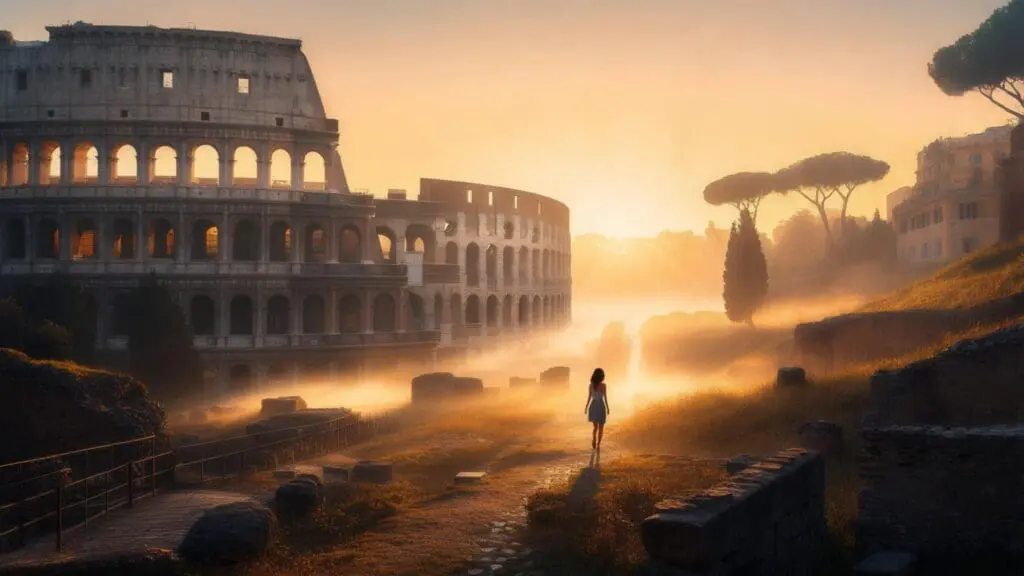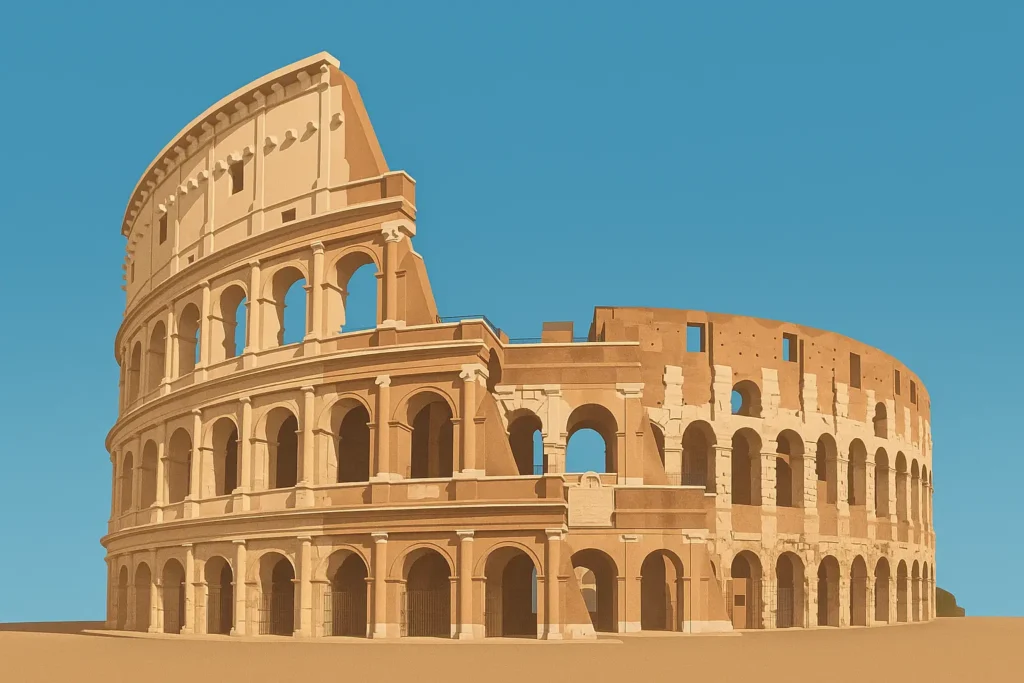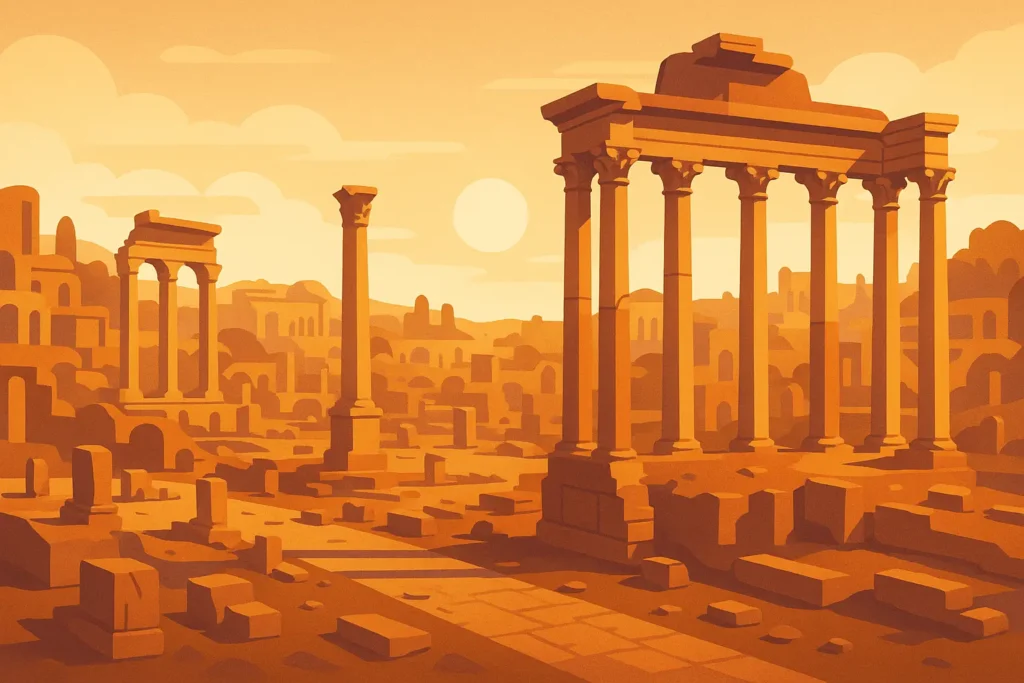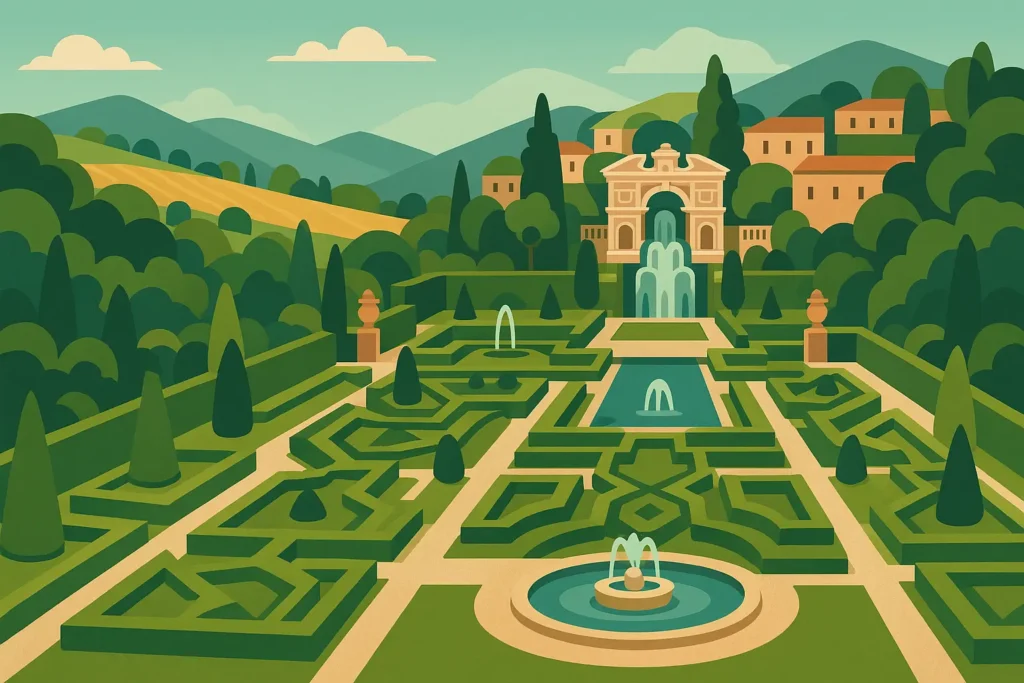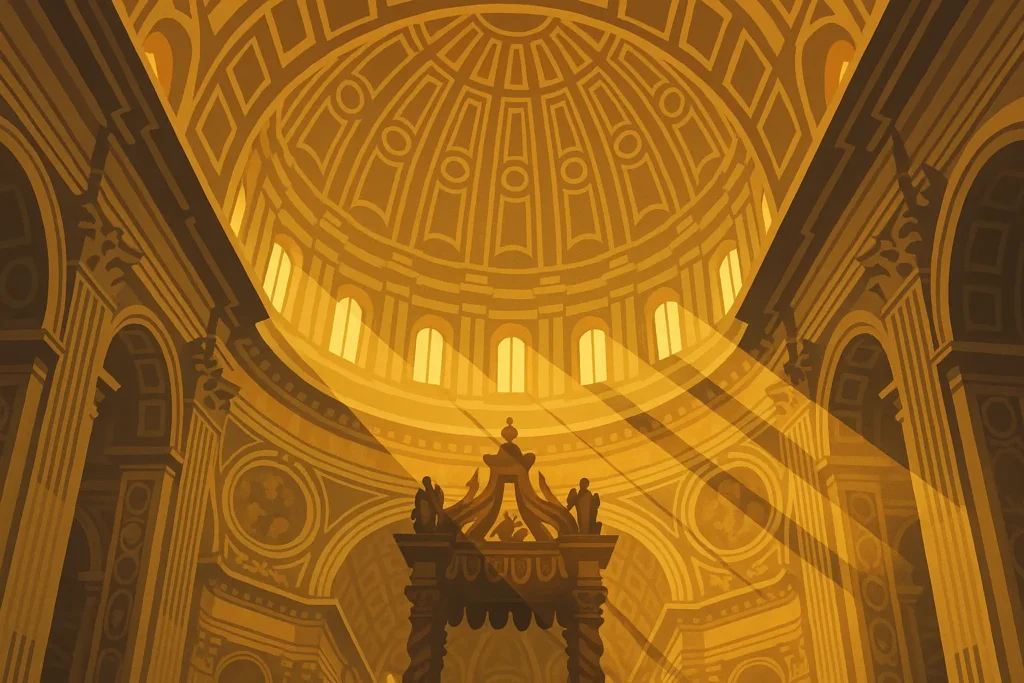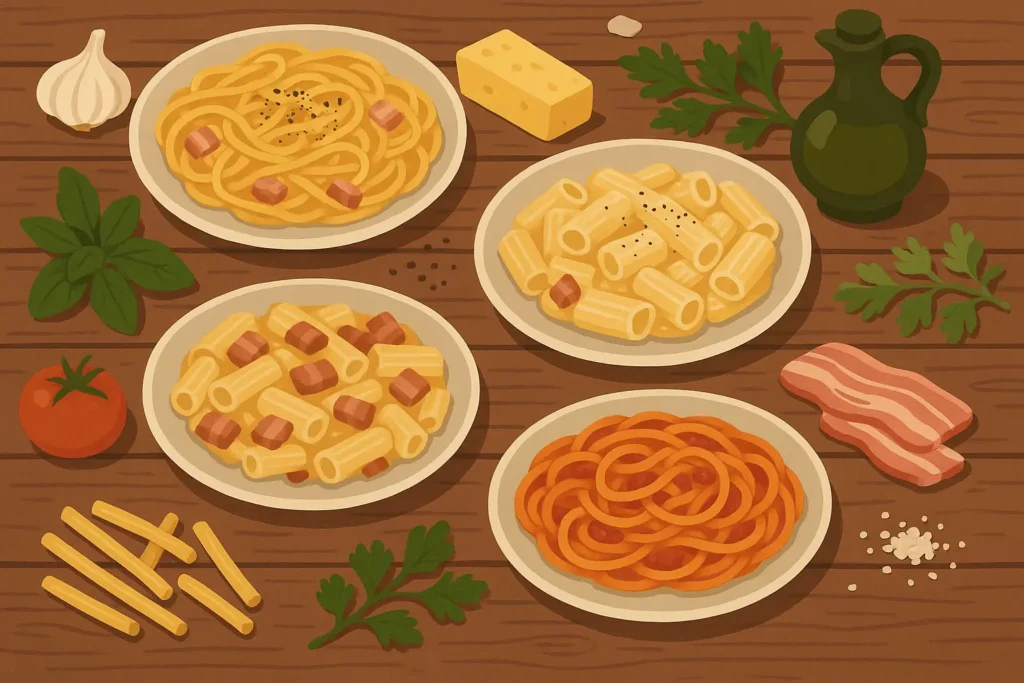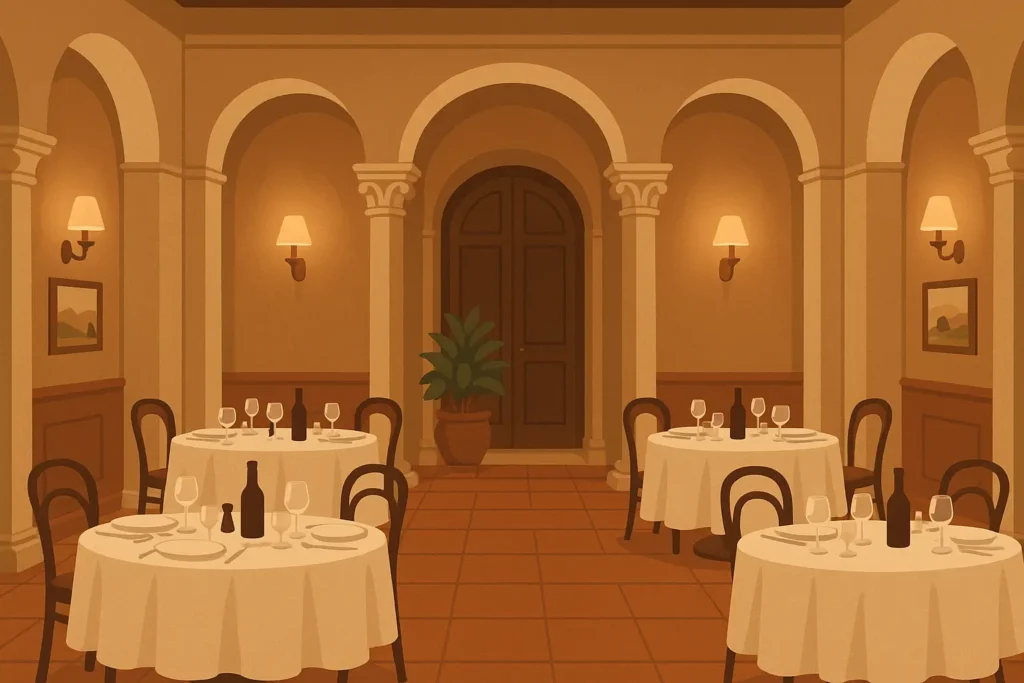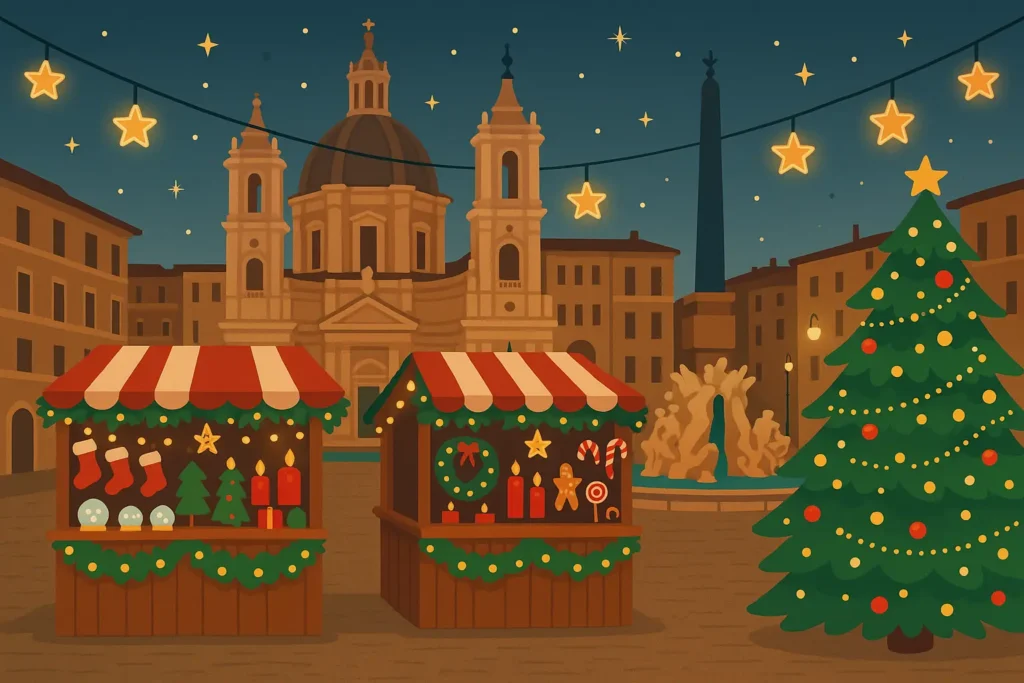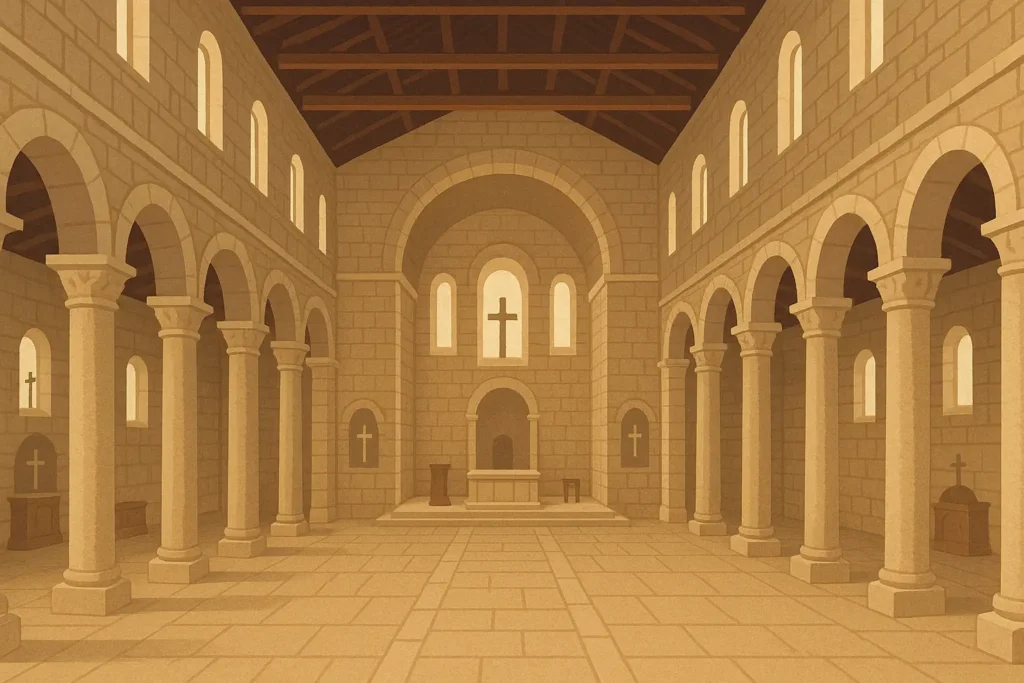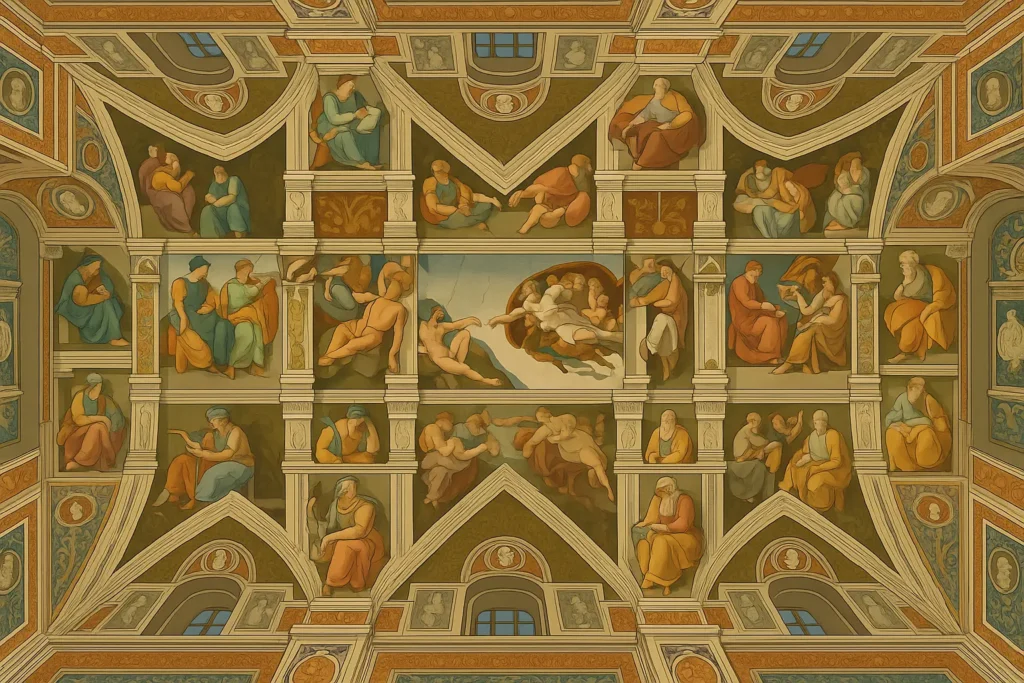Rome attracts over 10 million visitors annually, making it one of the world’s most popular tourist destinations according to Rick Steves’ travel guides. I remember standing in that endless Vatican Museums line during my first Rome visit, watching tour groups breeze past with their skip-the-line tickets while I melted in the summer heat. That frustrating experience taught me the importance of good planning when tackling the Eternal City.
Don’t make the same mistake — plan smarter with our Vacation Planner and build a customized Rome itinerary that fits your travel style.
Look, Rome isn’t just another European capital you can wing with a guidebook and good intentions. The city demands respect, some preparation, and most importantly, the right rome itinerary for your specific travel style. Whether you’re squeezing ancient wonders into a single day or savoring a week-long deep dive into the culture, your Rome experience really comes down to matching your itinerary to your unique situation.
Create your personalized Rome travel plan with our Vacation Planner — perfect for trips from 1 to 7 days.
Quick Resources:
-
Plan your Italian adventure with our Vacation Planner
-
Start early wedding planning while abroad with our AI Wedding Planner
-
Planning a Rome honeymoon or romantic trip? Try our Honeymoon Planner
-
Explore all our helpful Wedding Tools
I’ve spent years testing different Rome approaches, from budget backpacker adventures to luxury private tours. Here’s the thing – there’s no one-size-fits-all solution. Your perfect rome itinerary depends on factors you might not have considered: who you’re traveling with, when you’re going, how much you want to spend, and what actually interests you. All of these play crucial roles in determining which of these 25 itineraries will create your ideal Roman holiday.
TL;DR
- Rome needs good planning – your success depends on how long you’re staying, your budget, who you’re with, and what you’re into
- Duration-based itineraries range from intense one-day highlights to comprehensive week-long explorations
- Theme-focused approaches (ancient history, food, art, underground sites) let you really dive deep into what interests you
- Your budget dramatically affects your Rome experience, from free walking tours to luxury private guides
- Family itineraries need kid-friendly pacing and interactive experiences, while couples benefit from romantic spots
- When you go impacts everything from crowd levels to opening hours and weather
- Book skip-the-line tickets and restaurant reservations in advance for major attractions
- Extended stays allow for day trips to Tivoli, Ostia Antica, and regional wine areas
What Actually Makes a Rome Itinerary Work
Here’s what I’ve learned after multiple Rome trips: successful itineraries come down to being honest about your trip length, when you’re going, how much you want to spend, who you’re traveling with, and what actually interests you. Understanding these basics before you pick your approach prevents those common tourist mistakes and makes sure your Roman adventure matches what you’re actually hoping for.
Planning Rome isn’t about checking boxes on a tourist list. Your rome itinerary needs to work with real-world stuff that can make or break your trip. How long you have determines whether you’ll be sprinting through highlights or really getting to know the city. A single day demands military-style precision and skip-the-line tickets, while a week lets you wander neighborhoods and stumble onto amazing discoveries.
| What Affects Your Trip | How It Changes Things | What to Think About |
|---|---|---|
| How Long You Have | Determines depth vs hitting highlights | 1 day = just the big stuff; 3+ days = really experiencing the culture |
| When You Go | Affects crowds, weather, hours | Summer = start early; Winter = focus on indoor stuff |
| Your Budget | Changes where you stay, eat, how you get around | Free attractions vs skip-the-line tickets |
| Who You’re With | Changes your pace and what you do | Families need breaks; couples want romance |
| What You Like | Shapes which attractions you pick | History buffs vs art lovers vs foodies |
When you go matters way more than just weather preferences. Summer brings crushing crowds and scorching heat that require early morning starts and afternoon hiding spots indoors. Winter offers great museum weather and fewer crowds, but shorter days and some things might be closed. Spring and fall are the sweet spots for outdoor exploration, though Easter and autumn festivals can make booking harder.
Traveling during peak season? Use our Vacation Planner to plan around Rome’s crowds and heat with smart timing strategies.
Budget decisions shape everything about your Rome experience. Staying near major attractions costs more but saves you time and energy getting around. Choosing authentic neighborhoods over tourist zones affects both what you pay for accommodation and where you eat. Skip-the-line tickets cost extra but eliminate hours of standing in lines.
Group dynamics require honest assessment of everyone’s interests, energy levels, and how much walking they can handle. Families need kid-friendly pacing and interactive experiences. Couples might prioritize romantic settings and intimate dining. Solo travelers benefit from group tour opportunities and flexible scheduling that lets them follow their interests.
Turn your Roman getaway into a romantic escape with our Honeymoon Planner — the perfect tool for couples exploring the Eternal City together.
What you’re actually interested in determines which Rome you’ll experience. History enthusiasts need archaeological depth and expert guides. Art lovers require museum strategies and masterpiece focus. Food adventurers benefit from market tours and cooking classes. Each approach reveals different layers of the city’s personality.
Duration-Based Rome Adventures (1-7 Days)
Duration-based itineraries give you structured approaches for different trip lengths, from intensive one-day essential highlights to comprehensive week-long explorations. Each timeframe needs specific strategies for getting the most out of your experiences while keeping realistic pacing and not burning yourself out.
1. Rome in a Day – Essential Highlights Blitz
This intensive one-day itinerary covers Rome’s three must-see attractions – the Colosseum, Vatican City, and central Rome highlights. Success requires booking tickets in advance, starting early, and getting around efficiently between sites while being realistic about what you can actually see versus really experience.
Rome in a day sounds impossible, but it’s actually one of Europe’s most thrilling urban adventures when you do it right. Your success comes down to planning ahead and accepting that you’re sampling rather than savoring. Start at 7 AM with pre-booked Colosseum tickets, giving yourself three hours for the ancient amphitheater and Roman Forum complex.
Getting to Vatican City requires smart timing – aim for early afternoon entry to Vatican Museums with skip-the-line access. The Sistine Chapel and St. Peter’s Basilica need another three hours minimum. Your evening wraps up with central Rome’s greatest hits: Pantheon, Trevi Fountain, and Spanish Steps create a romantic finale to your whirlwind tour.
Sarah’s One-Day Rome Success Story: Despite having only 8 hours during a layover, Sarah made the most of her Rome experience by booking a 7 AM Colosseum underground tour, taking the metro directly to Vatican City for a 1 PM skip-the-line entry, and ending with a sunset aperitivo near the Pantheon. Her advance planning and realistic expectations turned a potential disaster into an unforgettable adventure.
Physical stamina becomes crucial for this itinerary. You’ll walk about 8-10 miles while dealing with crowds, stairs, and sensory overload. Pack comfortable shoes, stay hydrated, and accept that bathroom breaks and meal times need precision timing. This approach works best for layover visitors or those with extremely limited time who want maximum impact.
2. Perfect 3 Days in Rome – Classic First-Timer Experience
The three-day Rome itinerary gives you the optimal balance for first-time visitors, dedicating each day to major themes: ancient Rome, Vatican City, and Renaissance/Baroque highlights. This pacing lets you properly explore without rushing while covering essential cultural experiences.
Three days in rome is the sweet spot for Rome newcomers – enough time for cultural depth without overwhelming complexity. Day one focuses entirely on ancient Rome, starting with Colosseum underground tours and moving through Roman Forum archaeological wonders. Palatine Hill gives you afternoon exploration of imperial palace ruins while offering panoramic city views.
Day two belongs to Vatican City and spiritual Rome. Early morning Vatican Museums entry beats crowds while ensuring you get the best Sistine Chapel viewing. St. Peter’s Basilica and dome climb take up your late morning, followed by Castel Sant’Angelo exploration. Evening aperitivo in nearby neighborhoods gives you authentic Roman social experiences.
Your final day celebrates Renaissance and Baroque Rome through architectural masterpieces and artistic treasures. Pantheon visits lead to Capitoline Museums or Palazzo Altemps cultural immersion. Afternoon highlights include Trevi Fountain wishes and Spanish Steps climbing, wrapping up with Villa Borghese park relaxation and Galleria Borghese artistic finale.
3. What to Do in Rome for 3 Days – Culture-Focused Alternative
This culture-focused three-day alternative emphasizes Rome’s artistic and religious heritage through museum visits, basilica tours, and Renaissance exploration. The itinerary appeals to travelers seeking deeper cultural understanding rather than tourist highlight collection.
Cultural enthusiasts need different Rome pacing that prioritizes artistic depth over tourist checklist completion. When considering what to do in rome for 3 days, day one immerses you in Rome’s museum treasures through Capitoline Museums’ ancient sculpture collections and Palazzo Massimo’s extraordinary frescoes. These venues provide context for understanding Roman artistic evolution without overwhelming crowds.
Religious Rome takes center stage on day two through Vatican exploration and papal basilica visits. Beyond tourist-focused Vatican Museums, you’ll discover San Giovanni in Laterano (the Pope’s actual cathedral) and Santa Maria Maggiore’s Byzantine mosaics. These experiences reveal Rome’s spiritual significance beyond postcard imagery.
Renaissance Rome concludes your cultural journey through Villa Borghese’s artistic treasures and Palazzo Altemps’ archaeological collections. This approach requires advance reservations for Galleria Borghese but rewards visitors with intimate artistic encounters. Evening neighborhood walks in Trastevere provide authentic cultural immersion away from tourist crowds.
4. Rome in 5 Days – Comprehensive Explorer
The five-day Rome itinerary expands beyond essential highlights to include day trips, neighborhood exploration, and underground discoveries. This timeframe allows for both major attractions and authentic local experiences while maintaining comfortable pacing.
Five days transforms your Rome experience from tourist sampling to cultural immersion. Your first 3 days in rome follow the classic itinerary structure, but days four and five open up possibilities for deeper exploration. Tivoli day trips reveal Hadrian’s Villa archaeological wonders and Villa d’Este Renaissance gardens, giving you countryside relief from urban intensity.
Ready to go beyond the basics? Plan your 5-day Rome itinerary step-by-step using our Vacation Planner.
Underground Rome becomes accessible with dedicated time for San Clemente’s three-layer historical journey and Catacombs exploration. These experiences require advance booking but offer unique perspectives on Rome’s layered history. Trastevere neighborhood immersion provides authentic dining and nightlife experiences away from tourist zones.
Additional time allows for cooking classes, wine tastings, and market tours that reveal contemporary Roman culture. Testaccio’s morning market scene and evening restaurant culture provide authentic local experiences. This itinerary balances must-see attractions with spontaneous discoveries that create lasting memories.
5. Week in Rome – Deep Dive Cultural Immersion
A full week in Rome enables comprehensive cultural immersion through multiple day trips, specialized tours, neighborhood exploration, and authentic local experiences. This extended timeframe allows for both major attractions and hidden gems while accommodating rest days and spontaneous discoveries.
Seven days unlocks Rome’s full potential for cultural immersion and regional exploration. Your week includes all essential attractions plus specialized experiences that reveal the city’s contemporary personality. Multiple day trip options include Pompeii archaeological adventures, Orvieto medieval charm, and Lazio wine region tastings.
Extended time allows for authentic experiences unavailable to shorter visits. Cooking classes in local homes, artisan workshop visits, and neighborhood festival participation provide genuine cultural exchange. You’ll develop favorite local restaurants, discover hidden churches, and understand Roman daily rhythms.
This timeframe accommodates rest days and spontaneous interests without schedule pressure. Rainy day alternatives, seasonal events, and personal energy levels can influence daily plans. Week-long visitors often return home with local friendships and insider knowledge that transforms future Rome visits.
Theme-Focused Rome Experiences
Theme-based itineraries cater to specific interests including ancient history, religious sites, art collections, culinary culture, and underground mysteries. These specialized approaches provide deeper cultural immersion for travelers with particular passions or expertise.
6. Ancient Rome Specialist Deep Dive
This specialized itinerary focuses exclusively on Rome’s ancient archaeological sites and historical significance. Perfect for history enthusiasts, it includes underground Colosseum tours, extensive Forum exploration, and day trips to nearby ancient sites like Ostia Antica.
Ancient Rome enthusiasts need specialized itineraries that prioritize archaeological depth over tourist variety. When you visit rome with historical focus, your journey begins with Colosseum underground access and arena floor experiences that reveal gladiatorial combat realities. Extended Roman Forum exploration with expert guides provides historical context often missed in standard tours.
Palatine Hill gets dedicated attention for imperial palace ruins and archaeological museum collections. Baths of Caracalla demonstrate Roman engineering prowess while providing insight into ancient social customs. Castel Sant’Angelo reveals transformation from Hadrian’s mausoleum to papal fortress.
Ostia Antica day trips transport you to Rome’s ancient port city, offering remarkably preserved mosaics, theaters, and commercial districts. This archaeological site provides context for understanding Roman daily life without modern city distractions. Expert guides enhance understanding of urban planning, social structures, and economic systems that defined ancient civilization.
7. Vatican and Religious Rome Pilgrimage
Religious Rome itineraries focus on Vatican City, papal basilicas, and early Christian sites. This spiritual journey includes Vatican Museums, St. Peter’s Basilica, the four papal basilicas, and catacomb explorations that reveal Christianity’s Roman roots.
Religious Rome extends far beyond Vatican tourist attractions to encompass the city’s profound spiritual heritage. Vatican Museums require early morning entry for optimal Sistine Chapel experiences, but your religious journey includes lesser-known papal basilicas that reveal authentic worship environments.
San Giovanni in Laterano serves as the Pope’s actual cathedral, offering more intimate spiritual experiences than St. Peter’s tourist crowds. Santa Maria Maggiore preserves extraordinary Byzantine mosaics while maintaining active worship functions. San Paolo fuori le Mura provides peaceful contemplation opportunities away from central Rome chaos.
Catacomb explorations reveal early Christian burial practices and artistic traditions that influenced Western religious art. San Clemente Basilica’s three
Catacomb explorations reveal early Christian burial practices and artistic traditions that influenced Western religious art. San Clemente Basilica’s three-layer construction demonstrates Christianity’s triumph over pagan religions through archaeological evidence. These experiences provide historical context for understanding Rome’s transformation from pagan empire to Christian center.
8. Art Lover’s Rome Masterpiece Tour
Art-focused itineraries prioritize Rome’s extraordinary museum collections, church frescoes, and architectural masterpieces. This cultural journey includes Vatican Museums, Capitoline collections, and specialized galleries that house Renaissance and Baroque treasures.
Rome’s artistic treasures require good planning for optimal viewing and cultural context. Vatican Museums demand early entry for Raphael Rooms and Sistine Chapel appreciation without overwhelming crowds. Capitoline Museums provide ancient sculpture context while offering panoramic city views from their terraces.
Palazzo Massimo houses extraordinary frescoes from Villa di Livia that demonstrate Roman domestic artistic sophistication. Palazzo Altemps specializes in ancient sculpture collections with detailed historical context. Villa Giulia reveals Etruscan artistic traditions that influenced Roman cultural development.
Galleria Borghese requires advance reservations but rewards visitors with intimate encounters with Bernini sculptures and Caravaggio paintings. Church visits reveal artistic treasures often overlooked by standard tourist itineraries – Santa Maria sopra Minerva’s Michelangelo sculpture and San Luigi dei Francesi’s Caravaggio cycle provide free artistic experiences.
9. Foodie’s Rome Culinary Adventure
Culinary-focused itineraries explore Rome’s food culture through market tours, cooking classes, wine tastings, and authentic dining experiences. This gastronomic journey reveals traditional Roman cuisine, street food culture, and regional specialties.
Roman food culture extends beyond tourist restaurant experiences to encompass market traditions, cooking techniques, and social dining customs. Testaccio Market provides morning exploration of seasonal ingredients and traditional specialties while offering authentic breakfast experiences with locals.
Marco’s Culinary Discovery: A professional chef from New York, Marco joined a Roman cooking class expecting basic tourist instruction. Instead, he learned that authentic carbonara uses only eggs, pecorino, guanciale, an d black pepper – no cream ever. The 80-year-old nonna teaching the class had never heard of adding cream and was genuinely confused by the suggestion. This experience transformed Marco’s understanding of Italian cuisine authenticity.
Cooking classes in Roman homes reveal family recipe traditions and technique secrets passed through generations. Traditional dishes like carbonara, amatriciana, and cacio e pepe require specific ingredient quality and preparation methods best learned through hands-on instruction. Wine pairings introduce regional Lazio varieties often unavailable outside Italy.
Street food tours explore supplì, trapizzino, and pizza al taglio traditions that define Roman casual dining. Jewish Quarter specialties like carciofi alla giudia provide historical context for Rome’s diverse culinary influences. Evening aperitivo culture in Trastevere reveals social dining customs that define contemporary Roman lifestyle.
10. Underground Rome Mystery Exploration
Underground Rome itineraries focus on the city’s hidden subterranean layers including ancient foundations, catacombs, and archaeological discoveries beneath modern streets. These mysterious journeys reveal Rome’s buried history and engineering marvels.
Rome’s underground layers contain archaeological treasures and historical mysteries unavailable through surface exploration. San Clemente Basilica’s three-level construction reveals 2,000 years of continuous occupation, from pagan Mithraic temples through early Christian worship to medieval reconstruction.
Catacombs of Priscilla provide insight into early Christian burial practices and artistic traditions that influenced Western religious art. These underground cemetery networks demonstrate early Christian community organization and belief systems through preserved frescoes and inscriptions.
Crypta Balbi reveals medieval Rome’s transformation through archaeological layers beneath modern streets. Baths of Caracalla underground sections demonstrate Roman engineering sophistication through hypocaust heating systems and water management. Domus Aurea virtual reality experiences reconstruct Nero’s golden palace through technological innovation.
Budget-Conscious Rome Planning
Budget-focused itineraries demonstrate how to experience Rome’s highlights across different spending levels, from free attractions and local dining to mid-range comfort and luxury experiences. Good planning maximizes value regardless of budget constraints.
11. Budget Rome – Free and Low-Cost Experiences
Budget Rome itineraries focus on free attractions, public spaces, local markets, and affordable dining options. This approach proves that meaningful Roman experiences don’t require expensive tickets or luxury services.
Budget Rome requires good planning but delivers authentic experiences often superior to expensive tourist alternatives. Free church visits provide artistic treasures and architectural marvels – the Pantheon, Santa Maria sopra Minerva, and numerous neighborhood churches house masterpieces without admission fees when you visit rome on a budget.
| Budget Category | Daily Cost Range | Key Strategies | Must-Have Experiences |
|---|---|---|---|
| Ultra Budget | €30-50 | Free attractions, picnics, walking | Pantheon, churches, Villa Borghese |
| Mid-Range | €80-120 | Skip-the-line tickets, local restaurants | Colosseum, Vatican, neighborhood dining |
| Luxury | €200+ | Private guides, premium hotels, Michelin dining | VIP tours, exclusive access, helicopter rides |
Public squares and fountains offer free entertainment and people-watching opportunities. Piazza Navona, Campo de’ Fiori, and Trastevere provide authentic Roman social experiences without costs. Villa Borghese park offers free recreation, picnic opportunities, and city views while providing relief from urban intensity.
Local markets like Campo de’ Fiori and Testaccio provide affordable meal options and cultural immersion. Picnic supplies from neighborhood alimentari cost significantly less than restaurant meals while offering authentic ingredient experiences. Walking tours with tip-based payment provide expert guidance without fixed costs.
12. Mid-Range Rome Comfort and Value
Mid-range Rome itineraries balance comfort with cost-effectiveness through smart attraction choices, local dining, and efficient transportation. This approach provides quality experiences without luxury pricing while maintaining reasonable comfort levels.
Mid-range Rome strategies maximize value through selective splurging on essential experiences while economizing on others. Skip-the-line tickets for major attractions like the Colosseum and Vatican Museums justify their cost through time savings and reduced stress. Smart accommodation location near metro stations provides convenience without premium neighborhood pricing.
Restaurant choices blend tourist-friendly establishments with authentic local venues. Lunch at neighborhood trattorias costs significantly less than dinner while providing identical food quality. Aperitivo culture offers substantial food portions with drink purchases, effectively providing dinner at cocktail prices.
Public transportation passes provide unlimited metro and bus access while eliminating individual ticket purchases. Walking between nearby attractions saves transportation costs while providing authentic neighborhood experiences. This balanced approach delivers comfort and cultural depth without financial strain.
13. Luxury Rome Experience – Premium Indulgence
Luxury Rome itineraries emphasize premium experiences, private guides, exclusive access, and high-end accommodations. This approach eliminates common tourist frustrations through professional services and VIP treatment while maximizing comfort and cultural depth.
Luxury Rome eliminates typical tourist frustrations through professional coordination and exclusive access. Private guides provide personalized attention and expert knowledge while avoiding crowd-related delays. Skip-all-lines access extends beyond standard skip-the-line tickets to include VIP entrances and after-hours visits.
Premium accommodations in central locations provide convenience and comfort while offering concierge services for restaurant reservations and activity coordination. Private transportation eliminates public transit concerns while providing climate-controlled comfort between attractions.
Michelin-starred dining experiences showcase Roman culinary excellence while providing memorable special occasion celebrations. Private cooking classes and wine tastings offer intimate cultural experiences unavailable through group tours. Helicopter tours and exclusive archaeological site access create once-in-a-lifetime memories.
Family and Group Rome Strategies
Family and group itineraries address specific needs including child-friendly pacing, multi-generational interests, and teen engagement strategies. These specialized approaches ensure all group members enjoy meaningful Roman experiences regardless of age or interests.
14. Family Rome with Kids – Child-Friendly Adventures
Family Rome itineraries prioritize child-friendly attractions, interactive experiences, and manageable pacing. This approach includes gladiator schools, parks, gelato tours, and educational activities that engage young travelers while covering essential Roman highlights.
Family Rome requires child-focused planning that maintains adult interest while accommodating shorter attention spans and energy levels. Gladiator School experiences at Gruppo Storico Romano provide interactive historical education that engages children while teaching Roman history through hands-on activities.
Villa Borghese park offers essential outdoor recreation between cultural attractions. Bike rentals, playgrounds, and Rome Zoo provide energy outlets while parents enjoy park beauty and city views. Picnic lunches reduce restaurant stress while providing budget-friendly meal solutions.
Interactive museum experiences and treasure hunts transform potentially boring attractions into engaging adventures. Time Elevator Rome provides multimedia historical education that appeals to visual learners. Gelato tours become educational experiences about Italian culinary traditions while satisfying sweet tooth demands.
15. Teen-Friendly Rome Adventure – Engaging Adolescents
Teen-focused Rome itineraries emphasize interactive experiences, underground exploration, food tours, and social media opportunities. This approach engages adolescent interests while providing educational value and cultural immersion.
Teen engagement requires balancing educational content with adventure and social media opportunities. Underground Rome exploration appeals to adolescent mystery interests while providing historical education. Catacomb tours and San Clemente’s multi-level construction offer unique experiences unavailable elsewhere.
Food tours and cooking classes provide hands-on cultural education while satisfying teenage appetites. Learning traditional pasta-making techniques or pizza preparation creates shareable experiences and practical skills. Street food exploration introduces authentic Italian flavors beyond familiar tourist options.
Photography walks focus on Instagram-worthy locations while teaching composition and cultural observation skills. Teens learn to see Rome through artistic lenses while creating personal travel documentation. Pop culture site visits and modern neighborhood exploration balance historical content with contemporary interests.
16. Multi-Generational Rome – Accommodating All Ages
Multi-generational Rome itineraries balance diverse age groups’ interests, energy levels, and mobility needs. This approach provides flexible pacing, varied activities, and accessible transportation while ensuring meaningful experiences for grandparents, parents, and children.
Multi-generational travel requires diplomatic itinerary planning that satisfies diverse interests and physical capabilities. Flexible pacing accommodates different energy levels while ensuring essential attractions receive adequate attention. Rest stops and café breaks provide recovery time while offering authentic Roman social experiences.
Transportation strategies prioritize accessibility and comfort over cost savings. Metro stations with elevator access and taxi services for longer distances reduce walking stress on older family members. Central accommodation locations minimize transportation requirements while maximizing convenience.
Activity variety ensures each generation finds personally meaningful experiences. Grandparents might appreciate religious sites and historical context while children prefer interactive experiences and outdoor activities. Parents often serve as mediators while seeking their own cultural fulfillment through balanced programming.
Seasonal and Special Interest Rome Tours
Seasonal itineraries address weather conditions, crowd levels, and seasonal events while special interest tours cater to couples, solo travelers, and specific demographic needs. These specialized approaches optimize Rome experiences for particular circumstances and preferences.
17. Summer Rome Strategy – Beating Heat and Crowds
Summer Rome itineraries address extreme heat and peak tourist crowds through early morning starts, indoor refuges, and smart timing. This approach maximizes comfort while ensuring essential attractions remain accessible despite challenging conditions.
Summer Rome demands good planning to combat oppressive heat and overwhelming crowds. Early morning starts at 6 AM provide optimal conditions for outdoor attractions before temperatures become unbearable. Colosseum and Roman Forum exploration must conclude before 10 AM to avoid dangerous heat exposure.
Indoor attractions become afternoon refuges during peak heat hours. Vatican Museums, Capitoline Museums, and air-conditioned churches provide cultural experiences while offering climate relief. Extended museum visits replace outdoor walking during 11 AM to 4 PM danger periods.
Evening activities extend later into night hours when temperatures become tolerable. Trastevere dining and fountain visits work best after 7 PM when locals emerge for evening social activities. Late dinner reservations align with Roman customs while avoiding tourist-heavy earlier hours.
18. Winter Rome Charm – Seasonal Advantages
Winter Rome itineraries capitalize on reduced crowds, indoor cultural focus, and seasonal celebrations. This approach emphasizes museums, cozy dining, and holiday atmosphere while managing shorter daylight hours and occasional weather challenges.
Winter Rome offers significant advantages for cultural enthusiasts willing to embrace seasonal limitations. Reduced tourist crowds provide intimate experiences at major attractions while eliminating reservation stress and long waiting lines. Museum visits become more contemplative without summer’s overwhelming visitor numbers.
Christmas markets and seasonal decorations transform Rome’s appearance while providing unique photographic opportunities. Piazza Navona’s holiday market and Vatican’s nativity displays create magical seasonal experiences unavailable during other periods. Indoor cultural activities align perfectly with shorter daylight hours.
Cozy trattoria experiences become more appealing during cold weather while providing authentic Roman winter dining culture. Hearty seasonal dishes and warm indoor atmospheres create memorable cultural experiences. Reduced outdoor walking requirements suit winter weather while maintaining cultural depth.
19. Rome for Couples – Romantic Getaway
Romantic Rome itineraries emphasize intimate experiences, sunset locations, couples activities, and romantic dining. This approach creates memorable shared experiences through private tours, wine tastings, and scenic viewpoints perfect for romantic celebrations.
Romantic Rome requires intimate experiences that create lasting couple memories while avoiding family-friendly or group-oriented activities. Sunset viewing from Pincio Terrace provides romantic city panoramas while offering peaceful moments away from tourist crowds. Private Vatican tours eliminate group distractions while providing personalized attention.
Planning a romantic trip or honeymoon in Rome? Let our Honeymoon Planner help you design the perfect couple’s itinerary.
Couples cooking classes create shared learning experiences while teaching authentic Roman culinary traditions. Wine tastings in Trastevere provide intimate cultural education while supporting local businesses. These activities foster connection while providing authentic cultural immersion.
Romantic dinner locations require advance research to avoid tourist traps while ensuring intimate atmospheres. Trastevere’s narrow streets hide romantic restaurants perfect for special occasion dining. Evening walks along the Tiber provide peaceful romantic moments while showcasing Rome’s illuminated beauty.
20. Solo Traveler’s Rome – Independent Exploration
Solo Rome itineraries emphasize safety, social opportunities, and flexible scheduling while providing recommendations for group tours, safe neighborhoods, and social dining experiences. This approach ensures solo travelers enjoy meaningful connections and secure experiences.
Solo Rome travel offers unparalleled flexibility while requiring additional safety considerations and social planning. Group tour options provide social interaction opportunities while ensuring expert guidance and security. Walking tours, cooking classes, and wine tastings facilitate meeting fellow travelers with shared interests.
Safe neighborhood recommendations prioritize well-lit areas with active nightlife and reliable transportation access. Trastevere, Monti, and areas near major attractions provide security while offering authentic Roman experiences. Evening dining in busy restaurants ensures social atmosphere while maintaining personal safety.
Flexible scheduling accommodates spontaneous interests and energy levels without group compromise. Solo travelers can extend museum visits, take impromptu breaks, or change plans based on weather or personal preferences. This freedom often leads to unexpected discoveries and authentic local interactions.
Extended and Specialized Rome Journeys
Extended itineraries include day trips and specialized interests like photography, history, spirituality, and off-the-beaten-path exploration. These comprehensive approaches cater to specific passions while providing regional context and unique perspectives on Roman culture.
21. Rome and Day Trips Combination – Regional Exploration
Extended Rome itineraries include day trips to Tivoli, Castel Gandolfo, Orvieto, and regional wine areas. These excursions provide countryside relief while exploring Roman influence beyond city boundaries and discovering UNESCO World Heritage sites.
Extended Rome stays enable regional exploration that provides context for understanding Roman civilization’s broader influence. Tivoli day trips combine Hadrian’s Villa archaeological wonders with Villa d’Este Renaissance garden artistry. These UNESCO World Heritage sites demonstrate Roman engineering and Renaissance aesthetics within easy day trip distance.
| Day Trip Destination | Distance from Rome | Travel Time | Key Attractions | Best For |
|---|---|---|---|---|
| Tivoli | 30km | 1 hour | Hadrian’s Villa, Villa d’Este | History & gardens |
| Castel Gandolfo | 25km | 45 minutes | Papal Palace, Albano Lake | Relaxation & wine |
| Orvieto | 120km | 1.5 hours | Medieval town, cathedral | Architecture & wine |
| Ostia Antica | 30km | 45 minutes | Ancient port ruins | Archaeological sites |
Castel Gandolfo and Albano Hills exploration reveals papal summer residence traditions while providing lake scenery and wine tasting opportunities. These excursions offer countryside relief from urban intensity while maintaining historical connections to Roman culture.
Orvieto day trips showcase medieval hilltop town charm while providing Etruscan archaeological context for understanding pre-Roman Italian civilization. Wine region visits in Frascati introduce regional specialties while supporting local agricultural traditions that define Lazio’s contemporary identity.
22. Photography-Focused Rome – Visual Storytelling
Photography-focused Rome itineraries emphasize optimal lighting conditions, architectural details, street photography opportunities, and Instagram-worthy locations. This approach teaches composition while documenting Roman beauty through various photographic techniques.
Photography-focused Rome requires understanding optimal lighting and crowd patterns for capturing iconic images without tourist interference. Golden hour locations like Pincio Terrace and Aventine Hill keyhole provide dramatic lighting while offering unique perspectives on familiar landmarks.
Architectural photography opportunities abound throughout Rome’s layered urban landscape. Ancient Roman engineering, Renaissance facades, and Baroque church details provide diverse subject matter while teaching composition and technical skills. Night photography sessions capture illuminated monuments while avoiding daytime crowd distractions.
Street photography in Trastevere and Campo de’ Fiori reveals authentic Roman daily life while respecting local privacy and cultural sensitivities. Market scenes, café culture, and neighborhood interactions provide documentary opportunities while fostering cultural understanding through visual observation.
23. Rome for History Buffs – Academic-Level Exploration
History-focused Rome itineraries provide deep archaeological context, expert guides, and specialized site access. This academic approach emphasizes historical accuracy, primary source connections, and comprehensive understanding of Roman civilization’s development and influence.
History enthusiasts require specialized itineraries that prioritize archaeological accuracy and historical context over tourist entertainment. Expert guides with advanced degrees provide academic-level interpretation while accessing restricted areas unavailable to general visitors. Private archaeological tours eliminate crowd distractions while enabling detailed discussions.
Professor Williams’ Academic Discovery: A Roman history professor from Oxford, Dr. Williams thought she knew everything about the Forum until her expert guide revealed recently discovered frescoes in the House of the Vestal Virgins, accessible only through special permits. The guide’s PhD in Classical Archaeology provided insights unavailable in any textbook, including ongoing excavation discoveries that challenged traditional historical narratives about Vestal Virgin living conditions.
Specialized museum collections like Palazzo Massimo’s frescoes and Crypta Balbi’s medieval artifacts provide primary source evidence for understanding Roman cultural evolution. These venues offer scholarly resources and detailed explanations that satisfy serious historical interests.
Academic-level content includes discussions of historiography, archaeological methodology, and ongoing research discoveries. Participants engage with current scholarship while examining physical evidence that supports or challenges traditional historical narratives.
24. Spiritual and Pilgrimage Rome – Religious Journey
Spiritual Rome itineraries focus on religious significance, pilgrimage traditions, and contemplative experiences. This approach includes the Seven Churches pilgrimage, early Christian sites, and meditation opportunities while respecting diverse faith traditions.
Spiritual Rome extends beyond tourist attractions to encompass genuine religious experiences and contemplative opportunities. Seven Churches pilgrimage follows traditional routes established by medieval pilgrims while providing historical context for understanding Christian Rome’s development.
Early Christian sites like San Clemente and Santa Pudenziana reveal authentic worship environments from Christianity’s formative period. These locations provide spiritual continuity while offering peaceful contemplation opportunities away from tourist crowds.
Meditation and prayer opportunities exist throughout Rome’s numerous churches and quiet spaces. Vatican spiritual tours focus on religious significance rather than artistic tourism while respecting diverse faith traditions and personal spiritual needs.
25. Off-the-Beaten-Path Rome – Hidden Gems Discovery
Alternative Rome itineraries explore lesser-known neighborhoods, hidden architectural gems, local markets, and authentic experiences away from tourist crowds. This approach reveals contemporary Roman culture while discovering unique locations perfect for experienced travelers.
Off-the-beaten-path Rome rewards curious travelers with authentic experiences unavailable through standard tourist itineraries. Quartiere Coppedè showcases Art Nouveau architecture that contrasts dramatically with ancient Roman and Renaissance styles. These hidden neighborhoods reveal Rome’s architectural diversity beyond familiar historical periods.
Aventine Hill’s keyhole view provides unique St. Peter’s perspectives while offering peaceful garden walks away from central Rome chaos. Local market experiences in Testaccio and Pigneto reveal contemporary Roman food culture while supporting neighborhood businesses.
Artisan workshop visits provide insight into traditional crafts that continue despite modern pressures. These authentic cultural exchanges create meaningful connections while supporting local artisans who maintain traditional skills and cultural knowledge.
Detailed Itinerary Breakdowns and Examples
Here’s how theoretical itineraries translate into practical daily schedules with specific timing, transportation, and logistics. These detailed breakdowns provide actionable guidance for implementing chosen itinerary approaches.
Rome in a Day – Hour-by-Hour Execution
The detailed one-day Rome schedule provides specific timing, transportation routes, and practical logistics for covering essential highlights. This breakdown demonstrates how advance planning and smart timing enable maximum cultural impact within severe time constraints.
6:00 AM – Early Start Strategy
Pre-booked skip-the-line tickets become essential for one-day success. Coffee and cornetto near Colosseum Metro station provide authentic Roman breakfast while positioning you for immediate attraction access. Early morning crowds remain manageable while providing optimal photography conditions.
7:00 AM – Ancient Rome Intensive (3.5 hours)
Colosseum underground access reveals gladiatorial preparation areas while avoiding peak crowd periods. Roman Forum exploration with audio guides provides historical context while maintaining efficient pacing. Palatine Hill overview offers panoramic views while completing ancient Rome’s essential trilogy.
11:00 AM – Vatican Transit Strategy
Metro Line B to Ottaviano provides fastest Vatican access while avoiding traffic delays. Quick lunch near Vatican walls maintains energy while positioning for afternoon cultural immersion. Smart timing ensures Vatican Museums entry during optimal viewing conditions.
12:30 PM – Vatican City Marathon (3.5 hours)
Vatican Museums require focused navigation to essential highlights – Sistine Chapel, Raphael Rooms, and Gallery of Maps provide maximum cultural impact. St. Peter’s Basilica visit includes dome climb for panoramic city views while completing Vatican’s essential experiences.
Perfect 3 Days in Rome – Complete Daily Breakdown
The comprehensive three-day schedule demonstrates optimal pacing for first-time visitors while balancing major attractions with authentic cultural experiences. Each day focuses on specific themes while maintaining realistic energy management and cultural depth.
Day 1: Ancient Rome Mastery
Morning Colosseum underground tours provide exclusive access to gladiatorial preparation areas while revealing engineering sophistication. Roman Forum exploration with expert guides offers historical context often missed in self-guided visits. Palatine Hill archaeological museum provides artifact context while offering imperial palace ruins exploration.
Lunch in Monti neighborhood introduces authentic Roman dining culture while providing rest between intensive cultural experiences. Afternoon activities balance archaeological education with relaxation through smart pacing and comfortable walking routes.
Evening aperitivo in Monti reveals contemporary Roman social culture while providing authentic neighborhood experiences. Trastevere dinner concludes your ancient Rome immersion while transitioning to evening’s romantic atmosphere.
Day 2: Vatican and Spiritual Rome
Early Vatican Museums entry at 7:30 AM provides optimal Sistine Chapel viewing conditions while avoiding overwhelming crowds. Raphael Rooms and Gallery of Maps offer artistic masterpieces while maintaining efficient museum navigation.
St. Peter’s Basilica and dome climb require physical stamina but reward visitors with architectural marvels and panoramic city views. Borgo neighborhood lunch provides authentic dining while offering rest before afternoon cultural activities.
Castel Sant’Angelo exploration reveals papal fortress history while providing Tiber River views. Evening sunset from Pincio Terrace creates romantic conclusion while offering panoramic city photography opportunities.
Matching Your Rome Itinerary to Your Travel Style
Here’s how different itinerary types align with specific traveler needs, preferences, and circumstances. This guidance helps you pick the optimal approach based on your unique situation rather than generic recommendations.
Duration Impact Assessment
How long you have dramatically affects cultural depth, pacing requirements, and experience quality. Understanding these trade-offs helps you set realistic expectations while maximizing your available time investment.
Rome in a day delivers maximum tourist highlights but sacrifices cultural depth for breadth coverage. This intensive approach suits layover visitors or those with extremely limited time who prioritize iconic experiences over cultural understanding.
Three-day Rome visits provide optimal balance for first-time visitors, allowing proper cultural absorption without overwhelming complexity. This timeframe enables meaningful attraction exploration while accommodating rest periods and authentic dining experiences. Extended stays unlock regional exploration and authentic local experiences unavailable to shorter visits.
Week-long Rome immersion transforms tourist visits into cultural education through neighborhood familiarity, local relationship development, and spontaneous discovery opportunities. Extended timeframes accommodate personal interests, energy fluctuations, and weather contingencies without schedule pressure.
Budget Considerations Analysis
Your spending level affects accommodation location, dining quality, transportation comfort, and attraction access. Good budget allocation maximizes value regardless of total spending capacity while ensuring meaningful cultural experiences.
Budget constraints significantly impact Rome experience quality but don’t eliminate meaningful cultural opportunities. Free attractions like churches, public squares, and parks provide authentic experiences while local markets offer affordable dining alternatives to tourist restaurants.
Mid-range budgets enable smart splurging on essential skip-the-line tickets while maintaining comfortable accommodation and dining standards. This balanced approach provides quality experiences without luxury pricing while eliminating common tourist frustrations.
Luxury budgets eliminate typical tourist challenges through private guides, exclusive access, and premium services. High-end experiences provide convenience and cultural depth while creating once-in-a-lifetime memories through personalized attention and VIP treatment.
Group Dynamics Evaluation
Who you’re traveling with affects itinerary selection, pacing requirements, and activity choices. Understanding group needs ensures all participants enjoy meaningful experiences while maintaining harmony and satisfaction.
Family travel requires child-focused planning that maintains adult cultural interests while accommodating shorter attention spans and energy levels. Interactive experiences, outdoor activities, and flexible pacing become essential for successful multi-generational experiences.
Coordinating a big family or group trip? Simplify every detail with our Vacation Planner — perfect for groups of all sizes.
Couple travel emphasizes romantic elements, intimate experiences, and shared cultural discoveries. Private tours, sunset locations, and romantic dining create memorable shared experiences while avoiding family-oriented or group activities.
Solo travel provides maximum flexibility while requiring safety considerations and social opportunity planning. Group tours, safe neighborhoods, and social dining experiences ensure meaningful connections while maintaining personal security and cultural immersion.
Seasonal Optimization Strategies
Weather conditions, crowd levels, and cultural events affect itinerary success. Smart seasonal planning maximizes advantages while minimizing challenges associated with different travel periods.
Summer Rome demands early morning starts and indoor afternoon refuges to combat extreme heat and overwhelming crowds. Smart timing and climate-controlled alternatives ensure cultural experiences remain accessible despite challenging conditions.
Winter Rome offers reduced crowds and intimate cultural experiences while requiring indoor-focused activities and seasonal celebration integration. Museum-heavy schedules and cozy dining experiences align perfectly with weather conditions and cultural opportunities.
Spring and fall provide optimal conditions for outdoor exploration while offering seasonal events and comfortable weather. These periods enable balanced indoor-outdoor programming while providing authentic cultural experiences without extreme weather challenges.
Final Thoughts
Rome’s complexity demands good itinerary planning that matches your specific circumstances, interests, and travel style. Success depends on honest assessment of your priorities, realistic expectation setting, and advance preparation for essential reservations and logistics. Whether you choose intensive one-day highlights or extended cultural immersion, the right itinerary transforms Rome from overwhelming tourist destination into meaningful cultural experience.
Look, Rome rewards prepared travelers while punishing those who attempt to wing it without good planning. Your perfect Roman adventure exists among these 25 itineraries, but success depends on honest self-assessment and realistic expectation setting. How long you have, budget realities, who you’re traveling with, and what actually interests you all influence which approach will create your ideal experience.
The city’s layered complexity requires careful planning, expert guidance, and attention to detail that ensures every moment contributes to lasting memories. Professional coordination and insider knowledge eliminate guesswork while maximizing cultural impact through structured approaches.
Your Roman adventure awaits, but it requires the same level of planning that makes any major trip memorable. Choose your itinerary based on your unique circumstances, book essential reservations in advance, and prepare for cultural experiences that will influence your perspective long after you return home. Rome isn’t just another vacation destination – it’s a cultural education that rewards those who approach it with proper preparation and realistic expectations.
Whether it’s your honeymoon, family trip, or group adventure, start your journey with the Vacation Planner and explore all our tools on the Wedding Tools page.
1-800-BRIDESMAID
The Newlywed
Card Game
something extra to love
Read the weekly newsletter from Bridesmaid for Hire, 1-800-Bridesmaid, to hear about real stories, from strangers, who need advice on love, life, friendship, and so much more.
Looking for the perfect wedding gift for someone you adore? Grab The Newlywed Card Game. It's a fun and interactive game they can play on their honeymoon or future date nights.
